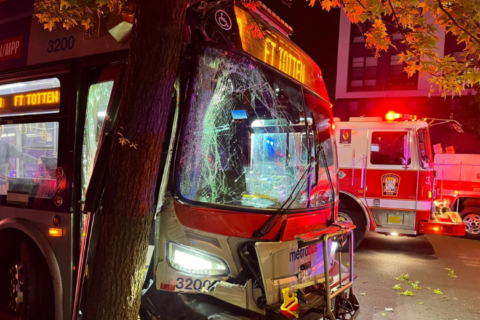The Planet Word museum in Northwest D.C. launched a new exhibit this month that explores the science behind dyslexia, the learning difference that makes reading difficult.
It’s called “Inside Look: Dyslexia,” said Nikki DeJesus Sertsu, senior director of exhibits and special projects at the museum.
The museum opened the exhibit because October is Dyslexia Awareness Month.
“We want to be a place where people can unlock the magic of language and reading,” DeJesus Sertsu told WTOP. “In this installation, you will learn what it’s like to have dyslexia.”
Researchers believe one in five people in the U.S. have the learning disorder. The exhibit also aims to dispel misconceptions about dyslexia and spark empathy for people dealing with it.
Many times, students who struggle with the learning difference are misdiagnosed.
“Dyslexia is often misunderstood, and because of that, it can be missed or misdiagnosed during the critical time when most children become fluent readers,” said Kim Wargo, head of school at The Lab School, a renowned school for students with learning differences in the District. “That’s why it’s so important for educators and organizations like Planet Word to build public understanding about dyslexia.”
In one part of the exhibit, visitors hear interviews from students with dyslexia. They explain how they were diagnosed, the challenges they face at school and the instructional methods teachers use to help them read, DeJesus Sertsu said.
“It is neurobiological. It is not a reflection of intelligence,” she said. “Dyslexia just causes them to learn differently. And with the right tools and accommodations, they can go on to be avid readers.”
Planet Word draws heavily on brain science to explain the disorder.
Dyslexia affects three parts of the brain used for reading, which include recognizing sounds, pronouncing words and identifying sight words, DeJesus Sertsu said.
Planet Word partnered with Dr. Guinevere Eden to break down the complex, cutting-edge research in the exhibit. She is a professor of pediatrics and director of the Center for the Study of Learning at Georgetown University and former president of the International Dyslexia Association.
“We follow the science,” she said. “You hear that people with dyslexia read things backwards. In fact, we all do that when we’re learning how to read. There’s nothing that has ever been proven that says people with dyslexia do that more often. This really helps visitors really learn, understand and have empathy for people who have dyslexia.”
The museum plans to continue its dyslexia exhibit indefinitely.








